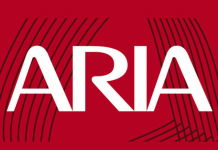Time for print (or trade for print, test for print, time for pictures, TFP, and sometimes print for time, PFT) is a term many photography communities use to describe an arrangement between a model and a photographer whereby the photographer agrees to provide the model with an agreed number of pictures of the best photographs from the session, and a limited license to use those pictures in return for the model’s time. A variant of this arrangement is time for CD or trade for CD (TFCD). With TFCD, the photographer provides the selection of images on a CD instead of prints. Similarly, with the ease and convenience of digital high resolution images, the generic term TF* has evolved, where it does not necessarily refer to a tangible CD or Printed image since the same accepted rules apply.
There are benefits to both parties of such an arrangement. The model can build a portfolio of prints to show to prospective clients at little or no cost, while the photographer gets a model for a particular project with little if any outlay of cash.
Conditions
Every photo shoot arranged on the various modelling communities is negotiated separately, with the consequence that agreed terms vary widely. The number of pictures which the photographer delivers to the model range from a single photograph for the shoot, up to six A4 prints for each hour the shoot lasts. Speed of delivery can vary widely as well, from a CD burned at the end of the shoot before the model leaves up to several months. Unless such a delay has been specifically discussed and agreed prior to the shoot, finished pictures should be delivered within two weeks.
Modelling levels (i.e., how clothed the model is) also must be fully agreed before the shoot starts. Once the shoot has started, the photographer should not “push” the model’s levels.
Usage
Depending on local laws, the model or the photographer might agree to limit the use of pictures from a shoot. The model may agree to only use specifically agreed pictures in their portfolios (to avoid sub-standard pictures that damage the photographer’s reputation), or the photographer may agree to only use certain images.
Legal requirements for a model release vary from place to place and from situation to situation, as does the situation regarding copyright. Certain exclusions and unless specifically agreed to the contrary, may use any photograph in any way he or she chooses, including selling them for profit. This does not necessarily apply in other countries. These issues should be discussed and agreed prior to the shoot, in writing if necessary.
Variations
Negotiated compensation for a model’s time can range from a straight cash figure, possibly including an amount for travel expenses or, depending on legal requirements, an extra amount for signing a model release, to a simple number of pictures in a chosen format. It can include part-pay, part-TFP arrangements or “Time For Clothes” agreements where the model is given some or all of the clothing which was procured for the shoot.
Testing
While sometimes people this term to mean TFP, agencies more commonly use it in the context of sending a new model to a photographer for a short session for portfolio pictures. While the model ultimately pays for these pictures, the agency normally pays in advance and deducts it from the model’s earnings. Test shoots are also used by models to build experience. Traditional agencies do not recognise the term time for print. Test was also created by photographers to try out new ideas for final images to show a client, this is with no payment from either party.





















